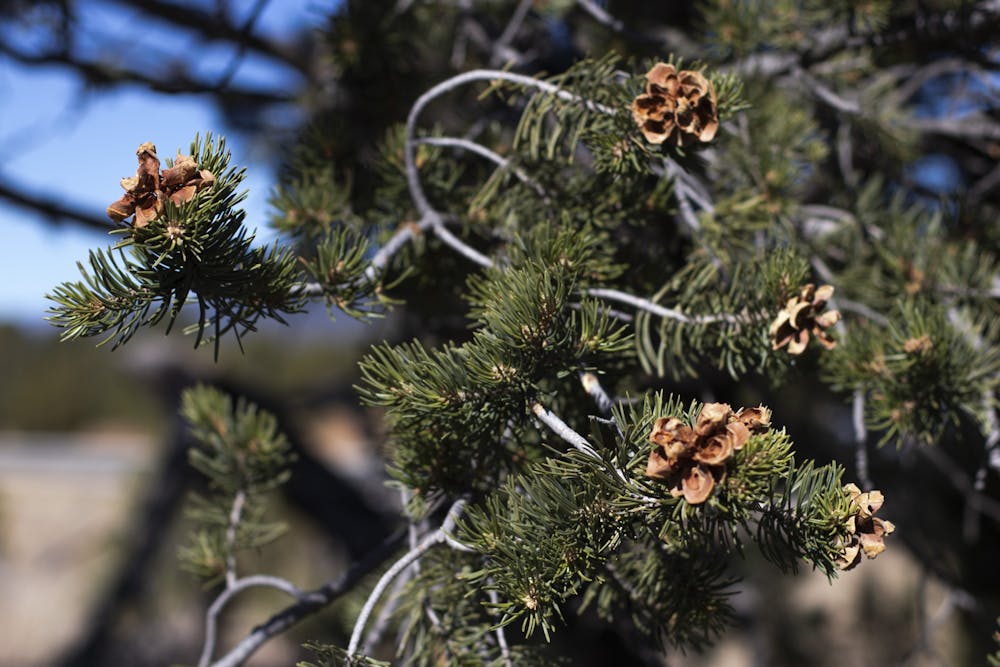As the autumn days grow shorter and the nights grow longer, a number of New Mexicans indulge in the picking of pine nuts — commonly known as piñon in the Southwest and pinyon in the rest of the U.S..
Many families across the state take time out of their days to harvest the tree nut between the months of September and November.
Bernadette Jaramillo, a youth minister at Our Lady of Guadalupe Catholic Church in the Archdiocese of Santa Fe, said she usually takes her family out to collect piñon during the years when the tree nut is being harvested.
“Depending on the year, it grows in different parts of the state. This year, it’s growing up near Las Vegas [New Mexico],” Jaramillo said.
The piñon tree is a slow-growing, small, long-lived and drought-tolerant tree that grows in the desert mountains of California, New Mexico, parts of Texas and northern Wyoming. The seeds produced by the tree are edible and are used in many traditional recipes while the needles were traditionally used to make tea.
According to Desert USA, an outdoor publication, piñon harvests happen between four to seven years and are highly dependent on the monsoon season.
“The past few years, there hasn’t been much, but we hope to make it up to Vegas this year before November ends,” Jaramillo said.
If one harvests piñon commercially, a permit must be obtained, but if someone is just picking for personal use ‚—as many New Mexican families do — the legal limit is 25 pounds.
In 1987, New Mexico passed The Piñon Nut Act. This law puts restrictions on those trying to pass piñon off as a different kind of nut and states that it is unlawful to use words, advertisement or ingredients that suggest that other nuts are piñon nuts.
This law protects the piñon nut from being taken advantage. The guidelines for harvesting piñon is provided by the Bureau of Land Management and has not been updated since 2007.
By following these guidelines, many families are able to enjoy harvesting the nut.
For Daniel Rodriguez, an Albuquerque local, was raised on picking piñon. He said the time spent shaking the trees and picking piñon off the ground is about spending time with family and having something to share after spending the day on the side of the road.
Get content from The Daily Lobo delivered to your inbox
“If we came out here to pick it to sell, I wouldn’t waste my time. That’s not what it’s for, that’s not what it’s about,” Rodriguez said.
Rodriguez drove his family 85 miles north towards the village of Pecos, NM. There an abundance of piñon has been produced this year. Residents like him are usually are able to find where the nut is falling over the years just by word of mouth.
The more people who are out surveying the ground for the small brown piñon nut that camouflages into the dirt, the more people will hear about the year’s harvest locations. According to him, the effects of climate change are having an effect on the piñon and he’s noticed the difference.
“It takes longer to come around,” Rodriguez said. “It’s here like every three or four years, in some places it’s every six years.”
Despite the wait for piñon to drop from the trees in the autumn, it remains a New Mexico treasure for locals to indulge in whether it’s picked or bought.
Alanie Rael is the Sports Editor at the Daily Lobo. She can be contacted at sports@dailylobo.com or on Twitter @AllyRael
Andrea Solis is a culture reporter for the Daily Lobo. She can be contacted at culture@dailylobo.com or on Twitter @drearooo






